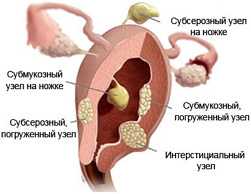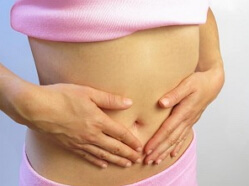Hyperandrogenism: photos, symptoms, causes and treatment
Hyperandrogenism in women indicates an overproduction of male hormones, especially testosterone, by the endocrine glands, adrenal glands, or ovaries. This phenomenon can have several causes and consequences.
For their correct determination, it is necessary to carry out a number of medical studies and analyzes.
It is important to know that neglected changes in hormonal levels can lead to a deterioration in the state of women's health, up to the loss of fertile body function.
A small percentage of androgenic hormones are still present in the female body, but when their blood level increases excessively, this is always a sign of organ dysfunction. In most cases, it is about the malfunctioning of the ovaries.
Content
- Symptoms
- Causes
- Treatment
- Related Videos
Symptoms


The symptoms of the disease can be more or less pronounced. It all depends on the amount of male hormones produced in excess in the female body, but in general they look like this:
- Dependent skin diseases such as androgenic alopecia, hirsutism, acne.
- Menstrual irregularities amenorrhea and infertility.
- Weight gain. Tendency with a special distribution of fat in the abdomen.
- Insulin resistance syndrome, high blood sugar, diabetes.
- In severe cases, there is an obvious lowering of the voice, an increase in muscle mass and a decrease in the mass of the mammary glands.
- The characteristic obvious signs of hyperandrogenism are: excessive hair growth, usually in uncharacteristic areas in women. For example: face, back, chest, arms and legs. It is important to note here that we are not just talking about excess hair, but about “abnormal” hair growth.
Causes
Among the main causes of female hyperandrogenism are:
- PCOS (syndrome polycystic ovary).
- Ovarian cyst.
- Ovarian tumors: benign or malignant.
- Diffuse hyperplasia (inflammation of the ovarian follicles, in which the eggs mature).
- Tumors of the adrenal glands.
- Tumors of the pituitary gland.
- Cushing's Syndrome. A disease that occurs as a result of prolonged exposure to hormone therapy.
- Congenital adrenal hyperplasia (rare pathologies associated with the reproductive system and adrenal malformations).
- Hypothyroidism A disease in which there is a significant imbalance in thyroid hormones, which is responsible for the vital activity of the most important human organs.
- Thyroid cancer.
- Hyperprolactinemia. The state in which the level hormone prolactin exceeds the norm.
Read also:Chronic cervicitis: what is it, causes, symptoms, how to treat
Treatment

Treatment of hyperandrogenism mainly depends on the cause and the time elapsed since the onset of the first symptoms.
If, for example, an increase in body weight, the appearance of hirsutism or acne occurs suddenly, most likely the reason lies in the appearance of a tumor in the adrenal glands.
If the problem is detected earlier, it is a question of ovarian dysfunction.
Among the possible therapy, excluding surgery, in the case of tumors, medications and hormonal agents based on female sex hormones are used.
Sometimes mild functional hyperandrogenism in young women tends to regress spontaneously with growth. This fact should not be overlooked.
Sometimes, in order to restore the work of the ovaries and the function of the endocrine system, it is enough to use food with reduced saturated fat and sugar, and increased sources of vitamins, healthy fats, minerals.
Proper nutrition will lead to return normal menstrual cycle and an overall improvement in symptoms.
Depending on the cause of the origin of the disease, the doctor prescribes a course of treatment:
- If the adrenal glands fail, corticosteroid-based treatment is used. It is especially effective in restoring ovulation and, therefore, fertility function.
- If the cause lies in ovarian dysfunction, therapy begins with weaker drugs, they do not require special control.
- If after five or six cycles the treatment does not bring the desired result, which occurs in 60 cases out of 100, the patient is prescribed a therapy similar to GnRH: a potent hormonal substance that stimulates the synthesis of the necessary hormones. 4. The advantage of this therapy is that the stimulation is controlled and does not interfere with multiple pregnancies.
- If, after several cycles, the desired result cannot be achieved again, doctors switch to direct stimulation of the ovaries with gonadotropin and FSH hormone. Such exposure is considered highly effective, but carries the risk of overstimulation or high water pregnancy.
- The next step in treatment is wedge resection of the ovaries. The patient undergoes laparoscopy, in which small incisions are made in the ovaries. The big disadvantage of this method is the risk of subsequent mechanical infertility.
Read also:Amenorrhea: what is it in women, causes, symptoms and treatment methods



